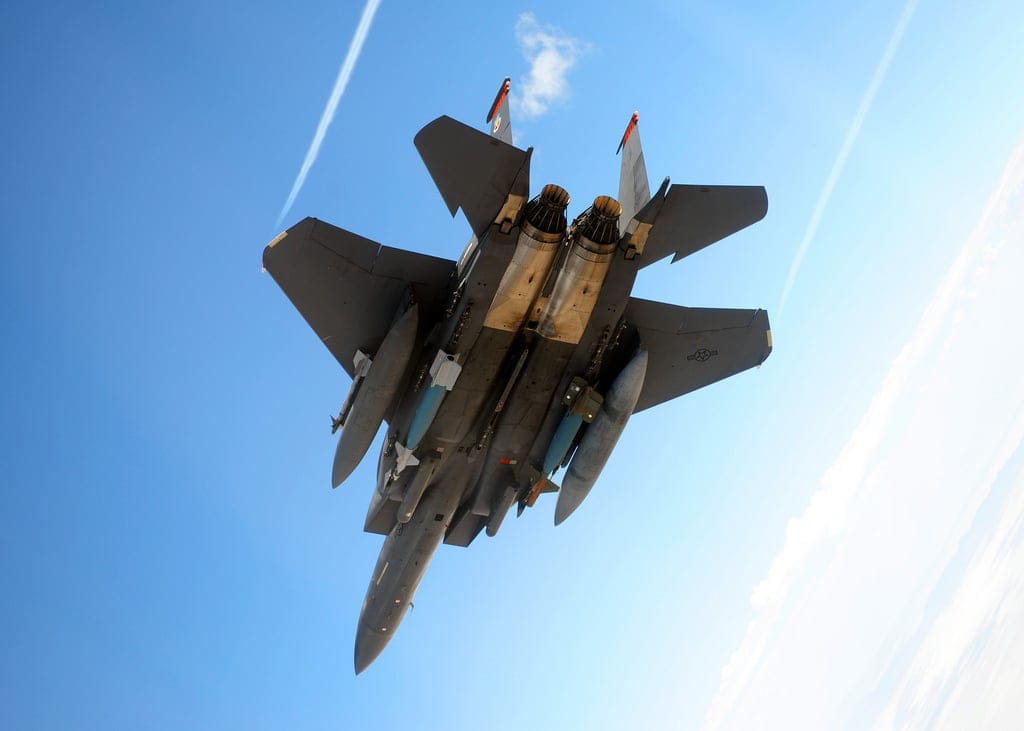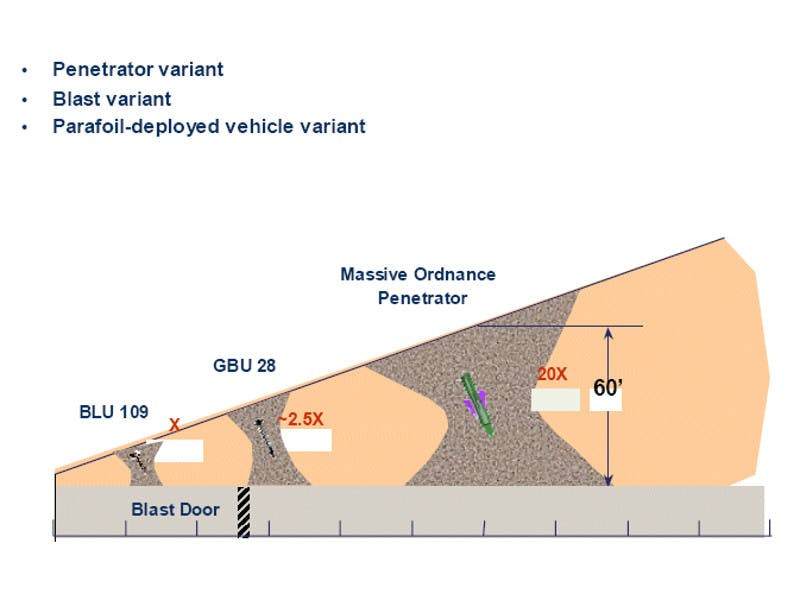Israel’s recent military campaign against Iran’s nuclear program has achieved significant successes, yet one target remains largely intact: the heavily fortified Fordow nuclear enrichment facility 12. Despite extensive airstrikes and advanced weaponry, the underground complex continues to operate, highlighting critical limitations in Israel’s military capabilities against hardened targets. This analysis examines why Fordow presents such a formidable challenge and what would be required to neutralize this strategic threat.

Rows of gas centrifuges inside an Iranian nuclear enrichment facility, likely the Fordow plant.
The Fordow Fortress: Engineering for Survival
The Fordow Fuel Enrichment Plant represents Iran’s most sophisticated approach to protecting nuclear assets from aerial attack 34. Located approximately 30 kilometers northeast of Qom in northwestern Iran, the facility was deliberately constructed to withstand even the most powerful conventional munitions available to regional powers.
The facility’s defensive architecture centers on its extraordinary depth and geological protection 23. Intelligence reports indicate that Fordow’s enrichment halls lie 260 to 300 feet beneath the surface, embedded within a mountain that rises over 3,000 feet above sea level 35. This positioning provides multiple layers of natural and artificial protection that make conventional attack extremely challenging.
Construction details reveal the facility’s hardened nature 67. The underground complex features reinforced concrete barriers and is surrounded by multiple surface-to-air missile systems 8. The International Atomic Energy Agency’s Director General Rafael Grossi has described visiting the site, noting it extends “half a mile underground” 2.

Comparison of bunker-buster penetration capabilities versus the estimated depth of Iran’s Fordow nuclear facility
Iran’s decision to build Fordow at such depths was directly influenced by Israel’s 1981 strike on Iraq’s Osirak nuclear reactor and the 2007 attack on Syria’s nuclear facility 9. These precedents demonstrated that surface or lightly buried nuclear installations remained vulnerable to precision airstrikes, prompting Iran to invest heavily in deeply buried infrastructure.
The facility currently houses up to 2,976 centrifuges capable of uranium enrichment 8. Recent IAEA inspections have detected uranium enriched to 83.7 percent purity, dangerously close to the 90 percent threshold required for weapons-grade material 68. Analysts estimate that Fordow could produce sufficient highly enriched uranium for a nuclear weapon within five to six days 6.

Timeline of key events in the Israel-Iran nuclear confrontation, highlighting Fordow facility developments
Israeli Air Power: Capabilities and Constraints
Israel’s air force possesses significant strike capabilities, centered primarily on the F-15I Ra’am fleet 1011. These 66 aircraft represent Israel’s primary long-range strike platform, capable of carrying up to 23,000 pounds of munitions over distances approaching 2,800 miles without refueling 1213.
The F-15I’s configuration makes it particularly suited for deep-strike missions 1113. Each aircraft features conformal fuel tanks that extend operational range while maintaining weapons capacity 13. The platform can simultaneously carry air-to-air missiles for self-defense and multiple precision-guided munitions for ground attack 11.

An F-15 Strike Eagle aircraft carrying GBU-28 Paveway III bunker buster bombs, illustrating a key munition for striking hardened targets.
However, the F-15I’s bunker-busting capability faces fundamental limitations when confronting targets like Fordow 1014. The aircraft’s primary deep-penetration weapon, the GBU-28, weighs 5,000 pounds and can penetrate approximately 150 feet of earth or 15 feet of reinforced concrete 1516. While effective against many hardened targets, these specifications fall short of Fordow’s protection levels.
The GBU-28’s development history illustrates both its capabilities and limitations 1517. Originally rushed into service during Operation Desert Storm in just 28 days, the weapon utilized artillery gun barrels as casings to create a penetrating munition 1518. Despite successful employment in Iraq and subsequent conflicts, the GBU-28’s penetration depth remains insufficient for the deepest buried targets.
Israeli forces have demonstrated extensive experience with bunker-busting operations 1914. Recent strikes in Lebanon employed up to 80 GBU-31 bunker-buster munitions against Hezbollah leadership targets 19. However, these urban targets required far less penetration capability than Fordow’s mountain fortress.
The Penetration Gap: Physics vs. Engineering
The fundamental challenge Israel faces in attacking Fordow stems from basic physics and engineering constraints 29. Current Israeli weapons simply cannot deliver sufficient kinetic energy to reach the facility’s operational areas through hundreds of feet of rock and reinforced concrete.
Technical analysis reveals the stark disparity between available capabilities and mission requirements 2021. The GBU-28’s maximum earth penetration of 150 feet falls well short of Fordow’s estimated depth of 260-300 feet 165. Even accounting for potential inaccuracies in depth estimates, the gap remains substantial.

Comparative diagram illustrating the penetration capabilities of BLU 109, GBU 28, and Massive Ordnance Penetrator bombs.
The penetration physics become more complex when considering the facility’s construction 2122. Fordow’s location within solid rock, combined with reinforced concrete barriers, creates a composite target requiring significantly more penetrating power than earth-only scenarios 2218. The facility’s designers deliberately exploited these material properties to maximize protective effectiveness.
Multiple strike scenarios have been analyzed by military experts 24. Even repeated attacks using multiple GBU-28 munitions would likely only damage peripheral areas of the complex, leaving core enrichment capabilities intact 27. The facility’s distributed design means that partial damage would not necessarily halt operations.
Alternative attack methods face similar constraints 723. While cyber warfare and sabotage operations have previously disrupted Iranian nuclear facilities, Fordow’s isolation and security measures make such approaches increasingly difficult 7. Ground-based special operations would face extreme challenges given the facility’s geographic position and defensive systems.
The GBU-57 Solution: America’s Massive Ordnance Penetrator
The United States possesses a weapon theoretically capable of threatening Fordow: the GBU-57 Massive Ordnance Penetrator 249. This 30,000-pound munition represents the pinnacle of conventional bunker-busting technology, designed specifically for deeply buried targets that conventional weapons cannot reach.
The GBU-57’s specifications dwarf those of Israeli weapons 2021. Weighing six times more than the GBU-28, the Massive Ordnance Penetrator can penetrate up to 200 feet of earth or 60 feet of reinforced concrete 2122. Its 5,342-pound explosive payload delivers devastating effects once the weapon reaches its target 21.
However, the GBU-57 remains exclusively American technology 244. Only the B-2 Spirit stealth bomber can deploy these weapons, and the United States has never transferred either the bombs or the aircraft to foreign operators 425. This creates an absolute dependency relationship that limits Israeli operational autonomy.
Even with American support, success against Fordow would not be guaranteed 226. Military analysts suggest that multiple GBU-57 impacts at the same point would likely be required to ensure facility destruction 9. The weapon has never been used in combat, introducing additional uncertainties about real-world performance 2616.
The strategic implications of American bunker-buster deployment extend far beyond military effectiveness 2427. Such operations would represent direct U.S. involvement in strikes against Iran, potentially triggering broader regional conflict and complicating diplomatic efforts 27.
Current Military Campaign: Successes and Limitations
Israel’s ongoing Operation Rising Lion has demonstrated both the reach and limitations of Israeli military power 123. The campaign has successfully targeted Iran’s primary uranium enrichment facility at Natanz, causing significant damage to above-ground infrastructure and likely impairing underground operations 2328.
The operation’s scope reflects sophisticated planning and execution 23. Over 200 Israeli aircraft participated in coordinated strikes using more than 330 munitions against approximately 100 targets 23. The campaign successfully eliminated key Iranian military leadership and degraded missile capabilities while targeting nuclear infrastructure.
Yet Fordow remains operational despite being attacked 23. International Atomic Energy Agency officials report no observed damage to the facility following Israeli strikes 3. This outcome underscores the fundamental challenge posed by deeply buried, hardened targets to conventional air power.
The campaign’s broader strategic success may have actually increased Fordow’s importance 628. With other nuclear facilities damaged or destroyed, Iran’s nuclear program becomes increasingly concentrated at sites that can continue operations 6. This concentration effect makes Fordow’s continued operation even more strategically significant.
Intelligence assessments suggest Iran is accelerating nuclear activities at remaining facilities 28. The recent discovery of near-weapons-grade uranium at Fordow indicates the facility’s central role in any potential Iranian nuclear weapons program 68.
Technological Alternatives and Future Developments
Several emerging technologies might eventually provide alternatives to current bunker-busting approaches 1629. The U.S. Air Force is developing the GBU-72 Advanced 5K Penetrator, designed to exceed GBU-28 performance while maintaining compatibility with existing aircraft 16.
However, even advanced conventional weapons face fundamental physical limits 18. The energy required to penetrate hundreds of feet of rock and concrete may exceed what chemical explosives can deliver, regardless of weapon design improvements 18.
Nuclear bunker-busters represent one theoretical solution but carry enormous political and strategic costs 18. The B61-11 nuclear bomb possesses earth-penetrating capabilities that could theoretically reach Fordow, but nuclear weapons use would cross fundamental thresholds with catastrophic consequences 18.
Innovative delivery methods might offer future possibilities 7. Sustained bombardment using smaller weapons could theoretically create cumulative effects, while directed energy weapons or other exotic technologies might eventually provide new options 7.
Strategic Implications and Regional Balance
Fordow’s apparent invulnerability to Israeli attack creates significant strategic implications for regional security calculations 124. Iran’s confidence in the facility’s protection may influence nuclear decision-making and diplomatic negotiations 24.
The facility’s survival demonstrates the limitations of preemptive military action against determined proliferators 28. Even successful campaigns like Operation Rising Lion cannot guarantee complete elimination of nuclear capabilities when adversaries invest sufficiently in protection 28.
American involvement remains the critical variable in any future scenarios targeting Fordow 244. Israeli officials have stated they can destroy the facility, but this capability appears to require U.S. support in the form of GBU-57 munitions and potentially B-2 bomber operations 124.
The diplomatic context surrounding potential American participation adds complexity to military planning 27. While the United States has provided extensive military support to Israel, direct participation in strikes against Iranian nuclear facilities represents a significant escalation 27.
Conclusion: The Persistence of Hardened Targets
Israel’s inability to independently destroy Fordow reflects fundamental realities about modern military technology and strategic defense 24. Despite possessing one of the world’s most capable air forces and extensive experience in precision strikes, certain targets remain beyond the reach of conventional military power 4.
The Fordow case illustrates the continuing relevance of passive defense in an era dominated by precision strike capabilities 37. Iran’s investment in deeply buried infrastructure has created genuine protection against regional military threats, forcing adversaries to seek either alternative approaches or external support 7.
This situation may persist indefinitely unless technological developments or strategic circumstances change dramatically 18. The physics of penetrating extreme depths through hardened materials creates challenges that may exceed conventional weapons’ capabilities regardless of future improvements 18.
For Israeli strategic planners, Fordow represents both a immediate challenge and a broader lesson about the limits of military solutions to proliferation threats 128. While military action can delay and degrade nuclear programs, completely eliminating determined proliferation efforts may require sustained international cooperation and diplomatic engagement alongside military pressure 28.
The facility’s continued operation serves as a stark reminder that in the ongoing competition between offensive strike capabilities and defensive hardening, engineering and geography can still provide decisive advantages against even the most sophisticated military forces 23.
Footnotes
-
https://www.timesofisrael.com/pm-israel-will-hit-all-nuclear-facilities-has-destroyed-half-of-irans-launchers/ ↩ ↩2 ↩3 ↩4 ↩5
-
https://abcnews.go.com/Politics/bombing-irans-underground-fordo-nuclear-plant-effective-expert/story?id=123013773 ↩ ↩2 ↩3 ↩4 ↩5 ↩6 ↩7 ↩8 ↩9 ↩10
-
https://www.aljazeera.com/news/2025/6/19/what-is-irans-fordow-nuclear-facility-and-could-us-weapons-destroy-it ↩ ↩2 ↩3 ↩4 ↩5 ↩6 ↩7
-
https://www.rferl.org/a/why-iran-fordow-nuclear-site-hard-to-destroy-israel-us-strike-bunker-buster/33449137.html ↩ ↩2 ↩3 ↩4 ↩5 ↩6 ↩7
-
https://isis-online.org/isis-reports/detail/irans-natanz-tunnel-complex-deeper-larger-than-expected/8 ↩ ↩2
-
https://thehill.com/policy/international/5359296-iran-fordow-nuclear-site-israel-iran-conflict/ ↩ ↩2 ↩3 ↩4 ↩5 ↩6
-
https://www.csis.org/analysis/three-things-will-determine-irans-nuclear-future-fordow-just-one-them ↩ ↩2 ↩3 ↩4 ↩5 ↩6 ↩7 ↩8
-
https://en.wikipedia.org/wiki/Fordow_Fuel_Enrichment_Plant ↩ ↩2 ↩3 ↩4
-
https://www.scientificamerican.com/article/the-massive-ordnance-penetrator-bomb-israel-wants-to-destroy-irans-fordo/ ↩ ↩2 ↩3 ↩4
-
https://nationalsecurityjournal.org/israels-f-15i-raam-fighter-was-built-to-bomb-iran-into-submission/ ↩ ↩2
-
https://nationalinterest.org/blog/buzz/forget-f-35i-adir-israels-f-15i-fighter-total-beast-210322/ ↩ ↩2 ↩3
-
https://www.sandboxx.us/news/the-f-15i-raam-fighter-jet-is-an-israeli-thunder-enabling-the-countrys-success-against-iran/ ↩
-
https://www.19fortyfive.com/2025/05/f-15i-raam-inside-israels-super-eagle-fighter-the-air-force-is-jealous-over/ ↩ ↩2 ↩3
-
https://www.twz.com/42714/the-air-forces-new-5000-pound-bunker-buster-bomb-breaks-cover ↩ ↩2 ↩3 ↩4 ↩5
-
https://science.howstuffworks.com/bunker-buster.htm ↩ ↩2 ↩3 ↩4 ↩5 ↩6 ↩7 ↩8
-
https://www.usni.org/magazines/proceedings/2024/october/closer-look-israels-use-80-bunker-buster-jdams-beirut ↩ ↩2
-
https://www.dote.osd.mil/Portals/97/pub/reports/FY2021/af/2021mop.pdf?ver=8RK7W9TEsJzYHjhCCD2BVQ%3D%3D ↩ ↩2
-
https://www.atlanticcouncil.org/blogs/new-atlanticist/by-fusing-intelligence-and-special-operations-israels-strikes-on-iran-are-a-lesson-in-strategic-surprise/ ↩ ↩2 ↩3 ↩4 ↩5
-
https://www.washingtonpost.com/opinions/2025/06/20/iran-israel-war-trump-netanyahu-fordow/ ↩ ↩2 ↩3 ↩4 ↩5 ↩6 ↩7
-
https://www.npr.org/2025/06/18/nx-s1-5437899/iran-bunker-buster ↩
-
https://abcnews.go.com/Politics/us-bunker-buster-bomb-irans-nuclear-program/story?id=122945512 ↩ ↩2
-
https://apnews.com/article/bunker-buster-bomb-israel-iran-fordo-fordow-b2-nuclear-8a612cbf16aa0f99bd9992334ffc93d7 ↩ ↩2 ↩3 ↩4
-
https://commonslibrary.parliament.uk/research-briefings/cbp-10284/ ↩ ↩2 ↩3 ↩4 ↩5 ↩6 ↩7